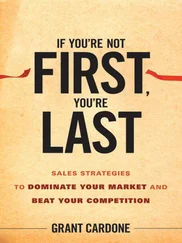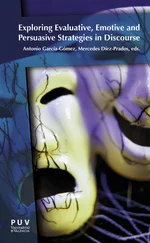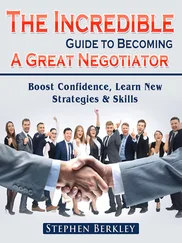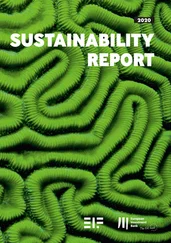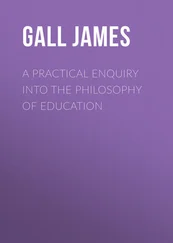17 Partnerships for the goals—Strengthen the means of implementation and revitalize the global partnership for sustainable development.Increasing international cooperation is seen as vital to achieving each of the 16 previous goals. SDG 17 is included to assure that countries and organizations cooperate instead of compete. Developing multi-stakeholder partnerships to share knowledge, expertise, technology, and financial support is seen as critical to overall success of the SDGs.
A REAL POSITIVE VIEW OF THE SDGs
While Figure 3.1lists the 17 SDGs in numerical order and tabular form, another view of the goals is depicted as a pyramid in reverse order as shown in Figure 3.2.
A FURTHER LOOK AT THE SDGs
A careful look at the 17 SDGs will reveal that there may be some conflicts between the goals. Achieving a target for one goal may affect another goal negatively. For example, SDG 8: Decent Work and Economic Growth calls for an annual increase in GDP of 7%. To achieve this goal could have a negative effect on SDG 12: Responsible Consumption and Production.

FIGURE 3.2 Sustainable development goals as a pyramid.
Another potential conflict can be between SDG 2: Zero Hunger and SDG 7: Affordable and Clean Energy. There are some clean energy options that are produced from vegetation such as a low carbon emitting vehicle fuel made from corn.
The 17 SDGs include a total of 169 targets [12]. This large number of goals and associated targets has been estimated to cost about US$2–3 trillion/year for the next 15 years [13]. A big portion of this cost is to provide clean water to entire nations. Implementation of the SDGs started worldwide in 2016, but each nation, organization, and corporation within each nation has started or will start at different times.
1 1. Fan S and Polman P. An ambitious development goal: ending hunger and undernutrition by 2025. In: Marble A and Fritschel H, editors. 2013 Global Food Policy Report. Washington, DC: International Food Policy Research Institute (IFPRI); 2014. p. 15–28.
2 2. United Nations Children's Fund, Progress for Every Child in the SDG Era. New York, NY: UNICEF; 2018.
3 3. United Nations: Gender Equality and Women's Empowerment. United Nations Sustainable Development. https://www.un.org/sustainabledevelopment/gender-equality/. Accessed 2019 Dec 17.
4 4. Progress of Goal 9 in 2017. Sustainable Development Knowledge Platform; 2017. https://sustainabledevelopment.un.org/sdg9. Accessed 2019 Dec 17.
5 5. Available at www.globalfootprintnetwork.org. Accessed 2019 Oct 24.
6 6. Ansuategi A, Greño P, Houlden V, Markandya, A., Onofri, L., Picot, H., Tsarouchi, G., Walmsley, N. The Impact of Climate Change on the Achievement of the Post-2015 Sustainable Development Goals. CDKN and HR Wallingford; 2015.
7 7. Available at http://www.ipcc.ch/report/sr15. Accessed 2019 Oct 24.
8 8. UNDP; 2017, https://www.undp.org/content/undp/en/home/sustainable-development-goals/goal-14-life-below-water.html.
9 9. WWF; 2017, https://www.weforum.org/agenda/2016/10/every-minute-one-garbage-truck-of-plastic-is-dumped-into-our-oceans/.
10 10. UN; 2016, https://www.theworldcounts.com/counters/ocean_ecosystem_facts/coral_reef_destruction_facts.
11 11. Available at https://www.nrk.no/hordaland/finn.no-kjoper-sekker-med-havplast-1.13599585. Accessed 2019 Oct 24.
12 12. Available at https://www.un.org/sustainabledevelopment/sustainable-development-goals. Accessed 2019 Oct 24.
13 13. The 169 commandments. The Economist. https://www.economist.com/leaders/2015/03/26/the-169-commandments. Accessed 2015 Mar 26.
CHAPTER 4 The Natural Step
In Chapter 3, we discussed the development of the UN Sustainable Development Goals (UNSDGs) and various other principles that can be considered as guides to achieving environmental and social sustainability. One of the principles not mentioned is The Natural Step (TNS). This one is somewhat unique and deserves special mention.
In the late 1980s, Karl-Henrik Robèrt, a Swedish medical doctor and cancer-treatment researcher could not help but be confused between two groups of people. On one hand, there were some people that were more concerned with increasing their personal wealth than a concern with the environment and its potential impact on children. And on the other hand, he was seeing concerned parents bringing to the hospital cancer-diseased children.
Dr. Robèrt became obsessed about the potential destruction of the environment. He saw humankind running into a funnel of declining life-sustaining resources and increasing demands [1]. He was aware of the various environmental issues like climate change, increased pollution, water scarcity, and all of which would be compounded with population growth. At the same time, he was not sure whether businesses would focus beyond short-term profits to long-term growth for the good of the environment, or whether there would be any legislation to make it happen. He then began to think: “My epiphany came one day when I was studying cells from cancer patients. It hit me that cells are the unifying unit of all living things. The difference between our cells and the cells of plants are so minor that it's almost embarrassing; the makeup is almost identical all the way down to the molecular level.” [2].
Dr. Robèrt drafted a first version of such a “consensus document” and sent this draft to a broad cross-section of scientists, including over 50 ecologists, chemists, physicists, and medical doctors in Sweden and asked for their input. Twenty-one drafts later, there was at last consensus about what is in principle needed to sustain the human civilization on earth. With the support of His Majesty the King of Sweden, Carl XVI Gustaf, this “consensus document” and accompanying audio tape were sent to every household and school in Sweden.
Based on this document, in 1989 Dr. Robèrt started TNS, an environmental not-for-profit organization in Sweden. He wanted to address these troubling environmental problems and seek advice and expertise of a growing circle of scientists, economists, business leaders, and other stakeholders in society. This dialogue with key participants spread throughout the world, and, as a result, TNS organizations were launched in the United States and other countries like Canada, the United Kingdom, Australia, and New Zealand.
Robèrt and his advisors developed a simple framework to look at the impact of the environment on businesses and how to provide a means for businesses to become sustainable. The framework was based on systems thinking, which is looking at the whole system, but in such a way that it can be made simple, thus allowing it to apply to almost any organization. The framework includes the following four core processes [1]:
Perceiving the nature of the unsustainable direction of business and society and the self-interest implicit in shifting to a sustainable direction
Understanding the first-order principles for sustainability, that is, the four System Conditions
Strategic visioning through “back-casting” from a desired sustainable future
Identifying strategic steps to move the company from its current reality toward its desired vision
He then applied the funnel effect to show how the supply and demand of environmental resources are converging. This impact on the environment can be best described as follows [3]:
Global society is currently unsustainable. Because we only have one planet Earth, and the laws of thermodynamics are such that matter and energy cannot be created or destroyed, there are limits to how much we can grow—in terms of both sources (the resources we use) and sinks (the natural systems where we deposit our waste). We are currently surpassing those limits because on the one hand population, consumption, competitiveness, and pollution are systematically increasing, while on the other hand resources, purity, ecosystems, and social equity are systematically decreasing.
Читать дальше



